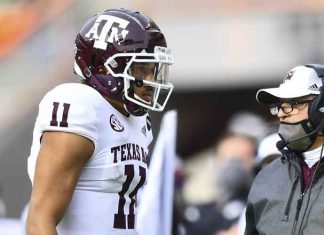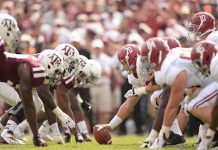Buoyed by turnaround season, Purdue bucked a trend in college football by increasing attendance by more 13,000 fans per game in 2017 – and, in the process, banked an extra $2.5 million in revenue compared to 2016.
Attendance at the FBS level was down overall last season by 1,409 fans per game, according to NCAA stats . CBS Sports reported it was the largest year-to-year decrease since 1983.
While media rights deals with television networks bring hundreds of millions of dollars into major college football programs, the bulk of which goes to schools in the Power Five, game-day revenue is still important.
Purdue, for example, made more than $8,700,479 in revenue for its six home games in 2017, according to the school. That was an increase of $2,563,903 over 2016, when the Boilermakers played seven games at Ross-Ade Stadium.
Behind first-year coach Jeff Brohm, Purdue went 7-6 last season after winning a total of eight games in the previous three years. Attendance at Ross-Ade rose by 13,433 per game from 34,451 in 2016 to 47,884 in 2017. That was the largest gain by average per game in FBS, and there is still room for the Boilermakers to add. Capacity for Ross-Ade is listed at 57,236.
Akron was second in FBS with a jump of 9,232 per game from 10,337 in 2016 to 19,569 in 2017. FAU and New Mexico State were next with gains of more than 8,000 fans per game.
Penn State had the fifth-largest gain and second best among Power Five schools, averaging 106,707 last season after being at 100,257 in 2016.
”Clearly we’re going in the opposite direction of what the national trend is,” Penn State Athletic Director Sandy Barbour said.
Barbour conservatively estimated the uptick in ticket sales alone would be worth at least $2.5 million in ticket revenue. That doesn’t count things like parking, concessions and sales of merchandise like T-shirts and programs.
Purdue made $348,634 in merchandise sales this season, $1,871,552 on concessions and $727,545 on parking. With Penn State drawing more than double the crowds to Beaver Stadium that Purdue was drawing at home, the extra 6,450 fans in the stands in 2017 was probably worth upward of $5 million for the Penn State.
That might not sound like a lot for an athletic department that spent $129 million in fiscal year 2016, but considering football revenue covers most of the bills to support for 31 sports and 800 athletes it all helps.
”These days when we’re all looking for increased revenue sources, an incremental 1,000, 2,000, 6,000 tickets is really important to programs,” Barbour said.
At the other end of the dial, UCLA had the biggest drop in attendance from 2016 to 2017, a decrease of 11,415 from 67,459 to 56,044. Fellow Pac-12 school California was the only other FBS to have its attendance drop by more than 10,000. The Bears dropped 10,080 to 36,548.
Pitt, Western Michigan and Louisville and East Carolina all had their average attendance fall by at least 7,300 per game.
Overall, 41 schools in FBS had their average attendance drop by at least 2,000 from the year before in 2017. Only 20 schools gained at least 2,000 fans per game.
—
Follow Ralph D. Russo at www.Twitter.com/ralphDrussoAP
—
More college football coverage: http://collegefootball.ap.org/ and www.Twitter.com/AP-Top25
25% Bonus via Western Union

















